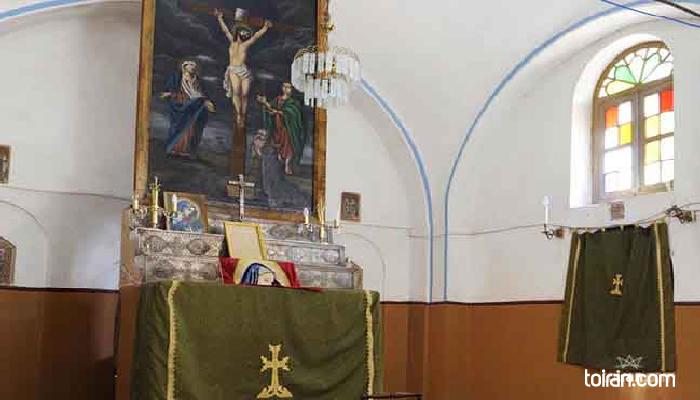St. Mary Church is the second oldest church in Isfahan located directly across from Bethlehem Church. This church has been built around Hakop Church, which is considered the oldest church in Isfahan.
In 1606, Armenian immigrants who fled from Julfa in Nakhchivan, now an exclave of the Republic of Azerbaijan, and the Ottoman massacre of the early 1600s, settled on the southern bank of Zayandeh River.
One of the first things these immigrants did was to build places of worship in their new home in the New Jolfa quarter. In 1613, the Armenians of Jolfa began the construction of this St. Mary Church.
This rectangular Safavid era church has domed halls, a chief characteristic of Armenian architecture. The main dome of this church has four lightwells resting on wide pillars, which divide it into three sections. The altar of St. Mary Church is located in the east and is flanked by two chambers.
Brick and mud brick are the main material used in the construction of this church. Plaster has been used on the walls of the church which are decorated with paintings featuring biblical scenes. The church also has two 300-year-old Venetian oil paintings hanging in its chapel.
St. Mary Church has a terrace with 20 pillars on three sides. These pillars have been adorned with colorful, glazed tiles. A bell tower was erected in the church in 1848. There is a small chapel named Stepanos to the south of St. Mary Church.
As this church has been named after the Virgin Mary, it has always been popular among the women of Jolfa who have for centuries come to it for prayers every Wednesday. On the Wednesday before Easter, it is the custom of the women of Jolfa to walk barefoot to this church.
In the northern part of St. Mary Church, there is another smaller church called Hakop, which was built in 1607 and is considered to be the oldest Christian place of worship in Isfahan.
This church was shaped like a crucifix but lost one of its arms in 1843. The church has three domes with the middle one being the largest of the three. The church is made of mud brick and has a simple exterior. The walls of this modest church are covered in plaster. Hakop Church has very simple tilework decorations. There are two Armenian inscriptions dating back to 1607 above its entrance.
St. Mary and Hakop Church Complex are registered National Heritage Sites.

